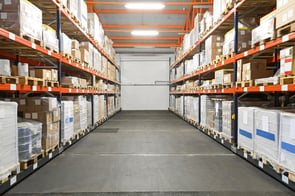 As you begin to integrate warehouse management software into your organization, you are presented with a good opportunity to review your current pallet storage methods and consider whether or not there may be a better methodology for storage available. The way you store pallets will depend on the importance of FIFO, the type of pallets you are receiving, your workflow, and the quantity of pallets you are receiving at one time.
As you begin to integrate warehouse management software into your organization, you are presented with a good opportunity to review your current pallet storage methods and consider whether or not there may be a better methodology for storage available. The way you store pallets will depend on the importance of FIFO, the type of pallets you are receiving, your workflow, and the quantity of pallets you are receiving at one time.
FIFO
Almost all warehouses today have prioritized FIFO as a part of their organization. When it comes to storing pallets efficiently, it can be difficult to maintain since the first pallets in are typically on the bottom of a stack or pushed to the back of a lane. Without spending large amounts of time unstacking and re-stacking pallets, and without additional space given to access lanes, it can be difficult to maintain FIFO successfully. Fortunately, a variety of sliding racks and creative lane usage have made this possible.
Type of Pallets
There are a number of reasons that pallets may not be stacked, or that they may only be stacked two high instead of going to the roof. Weight, contents, and the ability to interlock can all have an impact on this. If you are unable to stack pallets directly on top of one another, you will need to rely on pallet racks to increase your vertical space.
Workflow
Is it possible to have drive-in lanes that allow your forklift drivers to make their routes all in one direction? Can a driver move down the center of two lanes and access the first pallets in line without disrupting the remainder of the pallets in their lanes? If you plan your pallet storage well, it is possible to direct all traffic in your warehouse to avoid collisions and optimize efficiency.
Quantity of Product
One of the biggest problems of pallet storage is that you will probably experience several peaks throughout your year. This may necessitate extra racks during the holidays or more open floor space at other times. Your warehouse management software will help reduce the amount of fluctuation in your orders and allow you to anticipate changes in your inventory so that you can make space ahead of time. The more organized you are throughout the year, the easier it is to incorporate extra pallets without ruining FIFO and workflow.
Warehouse management software uses your input about pallet storage to guide your employees through putaway and picking. Now is the time to consider which pallet storage methods will work best with your new Warehouse Management Systems to achieve results. If you are currently struggling with aspects of your pallet storage, look into the tools and types of storage racks available to simplify the process for your drivers.




